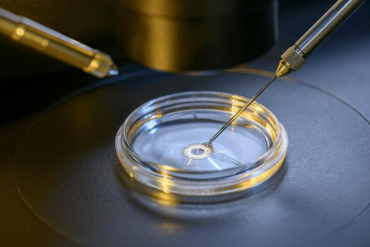
IUI (Intrautreine Insemination)
IUI is a technique in which sturdy sperm are shifted out from flaccid ones and later the washed sperm are placed into women’s uterus during the time of ovulation. Before the IUI treatment commences, it is mandatory to undergo a Patency Health Test to ascertain whether the fallopian tubes are robust and open. This method is particularly beneficial for the couples whose infertility problem is unexplained and ambiguous. This technique is also used when men can’t ejaculate in their partners’ vagina due to a raft of reasons ranging from psychological issues, impotence, vaginismus or anatomic problems.
Meaning Of Intrauterine Insemination (IUI)
Intrauterine insemination (IUI) is a laboratory procedure where fast moving sperms are separated from more sluggish or non-moving sperms. The fast moving sperms are then placed into the woman’s womb at the time of ovulation (when egg is released).

How winning is IUI?
The success of IUI depends on many factors. If a few have the IUI procedure performed monthly, success rates could reach as high as two hundredths per cycle looking on variables like feminine age, the rationale for the physiological state, and whether or not fertility medicine were used, among different variables.
While IUI could be a less invasive and fewer expensive choice, maternity rates from IUI square measure below those from IVF. If you think that you’ll have an interest in IUI, speak together with IUI centre in pune doctor to debate your choices.
Some couples need to explore additional ancient or over the counter efforts before exploring physiological state procedures. If you’re attempting to induce pregnantly and searching for resources to support your efforts, Venus Hospital & Test Tube Baby Centre has a tendency to invite you to ascertain out the fertility product and resource guide provided by our NFC Team.
IUI Procedure
After a period of abstinence for 3 days, to produce the optimum and healthy sperm, men jerk off into a jar. The best quality sperm are shifted out, which takes around 2 hours, and are placed in womb through a thin tube. This process is not painful for women but they might experience a slight discomfort or a little vaginal discharge which is just the cervical mucus.
If women are above the age of 35, the rate of success is decreased. Also, IUI might cause multiple pregnancy which results in twins, triplets or even quadruplets as it’s extremely difficult to control the growth of no. of follicles. It must be noted that IUI treatment must only be taken under the supervision of supremely skilled doctors in the state-of-the-art clinics to avoid the risks associated with IUI.
This is intrauterine insemination where the husband semen is washed to remove the debris, pus cells & bacteria & is slowly put inside the uterine cavity by the special catheter (Insemination Cannula). The process is painless, easy & OPD procedure. It requires no sedation or anaesthesia. It increases the chances of pregnancy as the semen quality is improved by washing, the quality of the egg is improved by medicine & the timing of insemination is set with the ovulation.
What are risks of laparoscopy?
Serious complications of diagnostic and operative laparoscopy are rare. Team of surgeons and anesthesiologists take all required care during and after anesthesia, surgery to prevent the complications. Also if complications arise, the team diagnoses and treats the complications efficiently. The major risk is damage to the bowel, bladder, ureters, uterus, major blood vessels, or other organs, which would require emergency surgery to repair. Injuries can occur during insertion of various instruments through the abdominal wall or during the operative treatment. There are other risks associated with laparoscopy, but they are all uncommon. Large hematomas of the abdominal wall can occur near the incisions. Pelvic or abdominal infections can occur. Allergic reactions, nerve damage and anesthesia complications rarely occur. Postoperative complications include urinary tract infection, skin incision infection, venous thrombosis, etc. When all possible complications are considered, one or two women out of every 100 may develop a complication, usually of a minor consequence. The risk of death during laparoscopy, which is about one to five per 100,000, is lesser than the risk of death during pregnancy. Certain conditions that may increase the risk of serious complications include: previous abdominal surgery especially bowel surgery, previous cesarean sections, severe endometriosis, pelvic infections, obesity, cardiorespiratory disease, etc.
What are disadvantages of open surgery?
Open surgery or laparotomy is generally performed through a bikini, transverse or vertical incision. Patients generally remain in the hospital for three to seven days following surgery and may return to the work in two to six weeks, depending upon the physical activity required. Nowadays many of the open surgeries can be performed by operative laparoscopy. Notwithstanding the advantages of operative laparoscopy, not all procedures can be performed with this technique. Some type of surgeries are too risky to perform laparoscopically, while in others it is not clear that laparoscopy yields as good as those by laparotomy. Finally the surgeon’s experience, skill also plays a significant role in deciding whether operative laparoscopy or laparotomy should be used.


